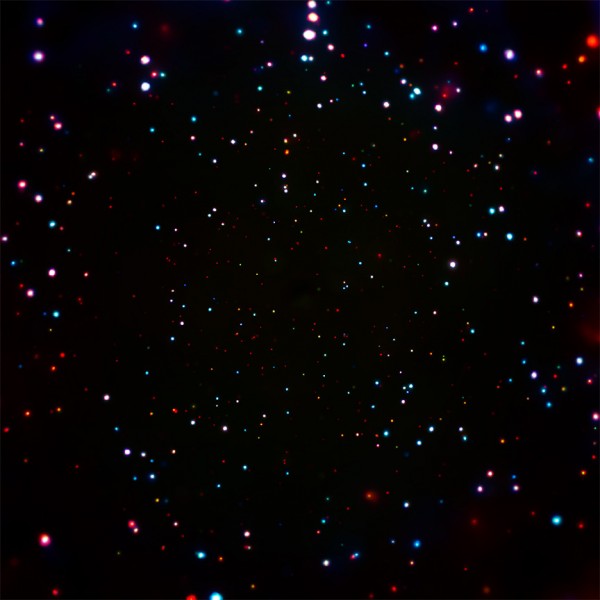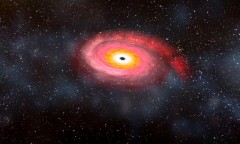By Vishal Goel, | January 12, 2017

This image contains the highest concentration of black holes ever seen, equivalent to 5,000 over the area of the full Moon. (NASA/CXC/Penn State/B. Luo et al)
Like Us on Facebook
According to research by Harvard scientists, a star can be ripped apart by the gravity of the black hole in Milky Way, forming hundreds of planet-sized gas balls that are flung throughout the galaxy at speeds of over 30 million kilometers per hour.
To study these "cosmic spitballs," Eden Girma, the lead author of the research and an undergraduate student at Harvard University, said they developed a computer code to answer questions like where they end up and how close they can come to the Earth.
According to Girma's calculations, these planet-mass objects can come within a few hundred light-years of Earth. With a weight somewhere between Neptune and several Jupiters, they would also glow from the heat of their formation, although not brightly enough to be detected. However, instruments expected to be built in future like the James Webb Space Telescope and Large Synoptic Survey Telescope might spot these far-flung oddities.
Also, according to Girma, 95 percent of the planet-mass objects will leave the galaxy due to their speeds of about 20 miles per hour.
Galaxies like Andromeda are shooting these "spitballs" at Earth all the time, says co-author James Guillochon of the Harvard-Smithsonian Center for Astrophysics (CfA).
How are these objects different from a typical planet?
Although being planet-size, these objects are believed to be different from a typical planet.
Firstly, they are made of star-stuff, and their compositions could vary depending on their parent star. Their formation time is less compared to a normal planet. A black hole shreds a star (in a process known as tidal disruption) in only one day and the resulting fragments take around one year to pull themselves back together and form these planet-like object. Meanwhile, it takes millions of years to create a planet like Jupiter from scratch.
-
Use of Coronavirus Pandemic Drones Raises Privacy Concerns: Drones Spread Fear, Local Officials Say

-
Coronavirus Hampers The Delivery Of Lockheed Martin F-35 Stealth Fighters For 2020

-
Instagram Speeds Up Plans to Add Account Memorialization Feature Due to COVID-19 Deaths

-
NASA: Perseverance Plans to Bring 'Mars Rock' to Earth in 2031

-
600 Dead And 3,000 In The Hospital as Iranians Believed Drinking High-Concentrations of Alcohol Can Cure The Coronavirus

-
600 Dead And 3,000 In The Hospital as Iranians Believed Drinking High-Concentrations of Alcohol Can Cure The Coronavirus

-
COVID-19: Doctors, Nurses Use Virtual Reality to Learn New Skills in Treating Coronavirus Patients











